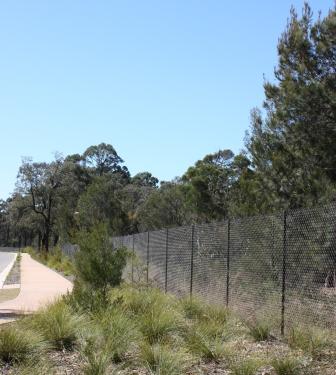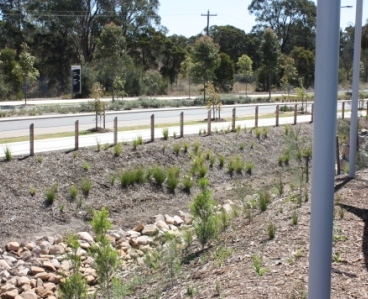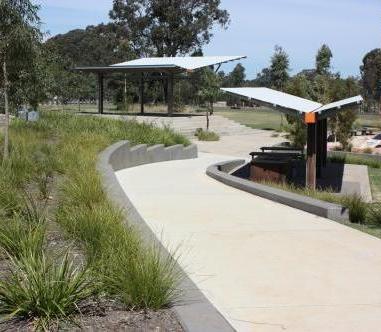
 |
|||
| Sponsors websites: | |||
Ropes Crossing - Landscape and DroughtBy Katrina Layt
Ropes Crossing has taken on a more environmentally friendly perspective compared to many developments in the past. I am not saying they are 100% green (who is these days?) but they are trying to integrate nature and the appreciation of natives into the lives of the residents that mostly would not have cared. It has been a controversial development site since the 90’s for being in one of the last significant areas of Cumberland plane woodland left. With people creating an uproar, the original development has been downsized and more area has been reserved for regional parklands (900ha). For those of you that don’t know, Ropes Crossing used to be home to a munitions factory for almost 50 years, so the land was developed and a lot of the woodland removed, making this a very tough site for plants to survive. The bushland has been slowly regenerated since being taken over by the ADI group. This site - as I said before - is really tough for plants to survive, particularly in the recent hot dry weather and the larger landscape areas obviously having no or very little water. Soils are of poor quality, especially with a munitions factory previously being on this site. Many old shells and other items were found in the ground which had to be removed and the soil treated. The use of native plants has helped many plants survive and thrive in these conditions, especially cultivars like Lomandra Tanika. Some plants have died and some were looking really dry while Tanika had survived the dry weather and looked good too. (See photo on right). Some other stand out plants in this tough landscape are Katrinus, Little Jess and Westringia’s. The photo with Tanika on the right is where a series of large retention basins are. This is where one of the environmentally friendly aspects of Ropes Crossing comes through. These series of basins are used to filter out sediment before it gets into the waterways of ropes creek on the site. This was one of the major problems people were worried about when development of this site started, having all the sediment from construction works getting into the waterways. Water from the kerbside gutters comes through a series of constructed river beds that filter out sediment with plants throughout them. The water then goes through a filter of sand and gravel, then to the water basin, then through another gravel filter and finally out to the creeks. This system is designed with great focal points and relaxing places for residents. Other green aspects of this site include keeping existing trees in some places and building around them and using trees that had been removed for mulching and outdoor furniture. It is disappointing to see that many of the houses have a lot of hard landscaping, but I can understand this with the limited amount of yard space there is. There is already some graffiti around the parks and gardens which makes me wonder how long these gardens and structures will remain intact and whether the position of this development is the best for what they want to achieve. It could work if the community aspect that they are pushing does come together. People buying a house at Ropes Crossing are encouraged to use mainly native plants in the garden to encourage native wildlife and keep with the theme of Ropes Crossing, not to mention less water needed and low maintenance. Stand out plants in the home gardens are Little Rev, Cassa Blue, Kangaroo Paws (Regal Velvet & Gold Velvet) as well as Tanika and westringia’s. When being able to use a little bit of water it opens up the choice and variety of native plant options that will look great in a garden. These plants still use a lot less water than exotics and most plants but do benefit from the occasional water.
For our harsh Australian climate and soils, using natives is the best choice. They survive, look great, need less water and less maintenance than if using exotic plants. Ropes Crossing has shown that the toughest plant to use is Tanika when designing commercial or public spaces. For more information on plants in this article go to www.ozbreed.com.au For more information on Ropes Crossing go to http://www.ropescrossing.com.au or visit the site to see it for yourself. |
 |
||
 |
|||
 |
|||
 |
|||
 |
|||